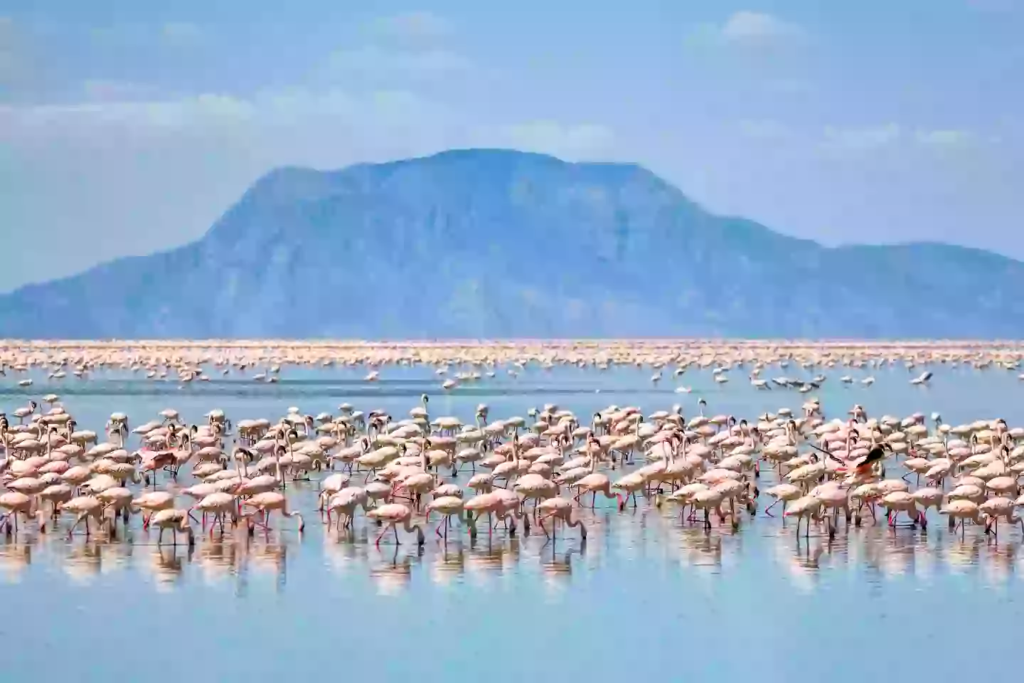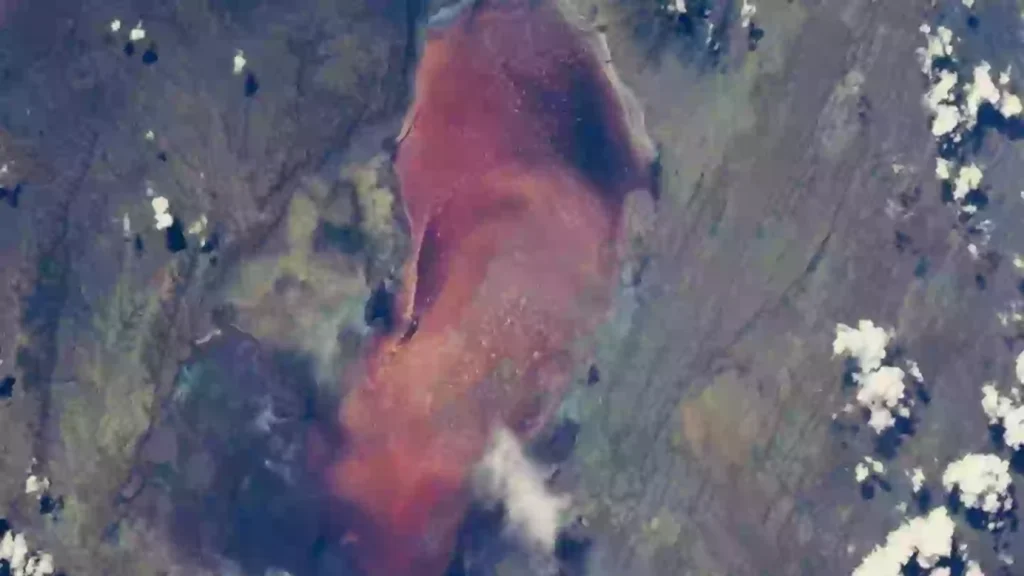Essentially, both animals and humans should steer clear, as the bacteria in the water is lethal, releasing toxins harmful to cells, nervous systems, and livers of those who consume it.
Additionally, sodium carbonate can be found in the water, a compound you wouldn’t want touching your skin, historically used in the embalming process in ancient Egypt.
Moreover, there’s the unsettling detail of animals turning to ‘stone’ upon coming into contact with the lake.
The water’s high salt concentration and alkaline pH can inflict burns on these creatures, leading to a process called calcification that envelops their bodies, effectively fossilizing them.
Fortunately for those affected, this grim fate is swift.
A silver lining, if you will.

The lake is a breading ground for the endangered lesser flamingo (Getty Stock Photo)
Despite the extreme dangers of contact, the lake remains a favored tourist destination, largely due to its breathtaking scenery.
Wildlife photographer Nick Brandt, who has captured images of these petrified remains, shared with NBC News: “I stumbled upon various animals—birds and bats—washed up along the shores of Lake Natron in Northern Tanzania.
“I found these creatures exactly as they lay and arranged them in ‘living’ poses, giving them a semblance of ‘life’ once again.”
Due to the intense heat, the roughly 400mm of rainfall received by Lake Natron annually is referred to as ‘phantom rain’, evaporating before reaching the lake’s surface.
Featured Image Credit: Space Frontiers/Getty Images


